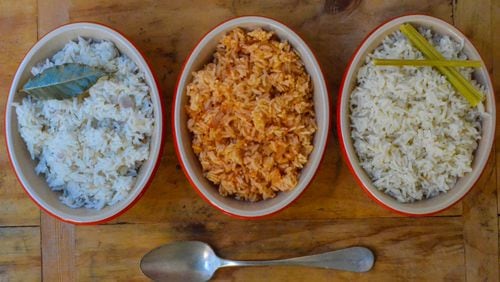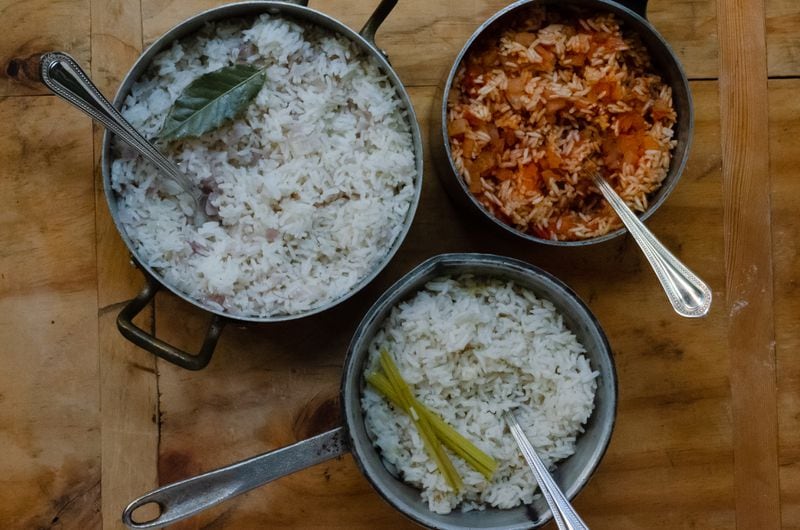For years, my attempts at preparing rice were disastrous. The results often resembled gloppy gruel. The pilaf method I learned at culinary school was my saving grace.
The basic technique for making rice pilaf is straightforward: Toast the rice in fat, simmer it in liquid, and remove from heat to finish the steaming process. The result is separate, individual grains of rice with a light, fluffy texture.
The formula is simple: 1 cup of long-grain rice to 1 1/2 cups of liquid. It makes 3 cups of rice, but you can multiply the recipe as needed using this ratio.
The rice needs to cook in a bit of fat, which sets the starch on the outside of the grain, essential for achieving separate and distinct grains of rice. The fat can be butter, oil, duck fat, coconut oil or another edible oil. The fat also sets the direction of the flavor for the final dish. It’s at this point in the process where you might want to add aromatics such as shallots, onion or ginger.
The liquid can also vary. Classic rice pilaf uses chicken stock, but the choices are endless. For example, use tomato juice for an Italian feel or coconut milk for an Asian-inspired bowl. Once the liquid is added, herbs — a bay leaf, thyme sprig, lemongrass or a lime leaf — can also go into the pot.
Pilaf can be made on the stovetop, but baking it in the oven allows for ambient heat with no worries about hot spots or scorching the bottom of the pan. Bake it for exactly 17 minutes. It’s an odd cooking time, but it works every time.
Virginia Willis is an Atlanta-based Food Network Kitchen chef, James Beard Award-winning food writer and author of seven cookbooks. Follow her at virginiawillis.com.
Credit: Virginia Willis
Credit: Virginia Willis
Pilaf variations
For tomato rice: Substitute butter with 1 tablespoon extra-virgin olive oil, use 1 1/2 cups tomato juice instead of chicken stock, and instead of a shallot and bay leaf, add half a chopped onion and 1/2 teaspoon Italian seasoning.
For coconut rice: Substitute butter with 1 tablespoon coconut oil, use 1 1/2 cups lite coconut milk instead of chicken stock, and instead of a shallot and bay leaf, add 1 tablespoon chopped ginger and 1 (3-inch) piece lemongrass (smack it first) or 1 makrut (sometimes labeled kaffir) lime leaf.
Read more stories like this by liking Atlanta Restaurant Scene on Facebook, following @ATLDiningNews on Twitter and @ajcdining on Instagram.
About the Author








